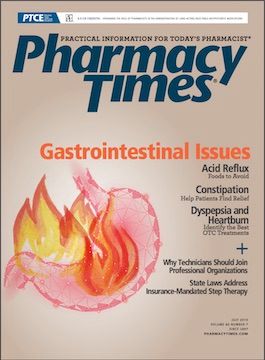Combating Diversion in Health Care Facilities Presents Challenges
But law enforcement has made a difference over the years, even in the days before software-tracked medications.
The investigation of diversion inside health care facilities has changed dramatically over the past 30 years.
The Cincinnati Police Department Pharmaceutical Diversion Squad was new in the fall of 1990. Nationwide, so was the investigation of drug diversion inside hospitals and nursing homes. Very few law enforcement agencies had initiatives in this area, with the Virginia State Police as a notable exception.
When the Cincinnati squad began, just one of our investigators had any experience in this specialized field of prescription drug abuse. His experience was not extensive, but it was all we had at the time. One disastrous situation in the investigative field had occurred, in which a nurse was charged and ultimately found not guilty, and the lawsuits had just been settled, making the investigators look bad.
The City of Cincinnati’s attorney came to our office and gave a 2-hour presentation on that case. Errors had been made in the investigation that I believed our investigators would not repeat. Nonetheless, it was incredibly helpful to review the case and hear our attorney speak about the issues.
The next step in getting the squad up and running was likely the hardest: We had to ask hospitals to cooperate and convince them that federal and state statutes existed to support our work. However, most hospitals complied and edged their way, when necessary, into criminal investigations of their employees. In virtually all cases, hospital security personnel were very cooperative, as were our most cooperative health professionals: pharmacists.
The hospital pharmacists and the pharmacists who worked for the supplying pharmacies for nursing homes offered incredible assistance in our investigations. In fact, in many cases they were the people who discovered suspicious behavior that turned into criminal cases. Pharmacists provided the documentation that we needed and they, along with nursing managers, made our jobs much easier and our success rate almost 100%.
I cannot say enough good things about the Ohio Board of Pharmacy and the expertise it provided us, with its hospital pharmacy—experienced pharmacists who were our mentors. Ultimately, we were arresting about 50 nurses a year, an incrediblefigure just for the City of Cincinnati.
These events took place long before the advent of the software that exists today to track medications and point to the outliers who are diverting medications. Most of the work was done by pharmacists and nurse managers when they saw signs of diversion. They had no computers that put up red flags or made comparisons of those administering medications.
Although much has changed in the world of drug diversion in health care facilities, some conditions have remained the same. One fact that still holds true is that virtually all those involved are self-addicted; they aren’t removing medications for resale but to feed an insatiable habit that can lead to death if not addressed. I have always believed that law enforcement intervention in these cases saved many lives over the years by forcing the diverters to enter rehabilitation, giving them a second chance to live a normal life. Most addicts will not move toward abstention without some significant event occurring in their lives to force them in that direction. Making health professionals accountable when the discovery of medication diversion in their facility is made is essential to successful results.
In 2015, I cofounded the International Health Facility Diversion Association (IHFDA), the first nonprofit organization dedicated solely to addressing the diversion of pharmaceuticals inside health care facilities. The organization’s 2016 kickoff event was a conference in Cincinnati that drew more than 200 attendees. They benefited not only from the information presented in the sessions but from networking with health professionals with common interests from across the United States and Canada.
Since then, our annual conferences have been held in St Louis, Missouri (2017) and Dallas, Texas (2018), and this year we will be welcoming our attendees to Orlando, Florida, from September 23 to 25. The packed agenda includes a session about the Mayo Clinic’s drug diversion program, a program 2 years in the making. The Mayo representatives will present all the details of their innovative program as well willingly share further specifics about its formation with interested staff from any facility. This is a golden opportunity for anyone who is tasked with combating drug diversion in a health care facility.
FOR MORE INFORMATION ABOUT THE IHFDA AND ITS ANNUAL CONFERENCE, VISIT IHFDA.ORG.
Cmdr. John Burke is a 40-year veteran of law enforcement, the past president of the National Association of Drug Diversion Investigators, and the president and cofounder of the International Health Facility Diversion Association.

